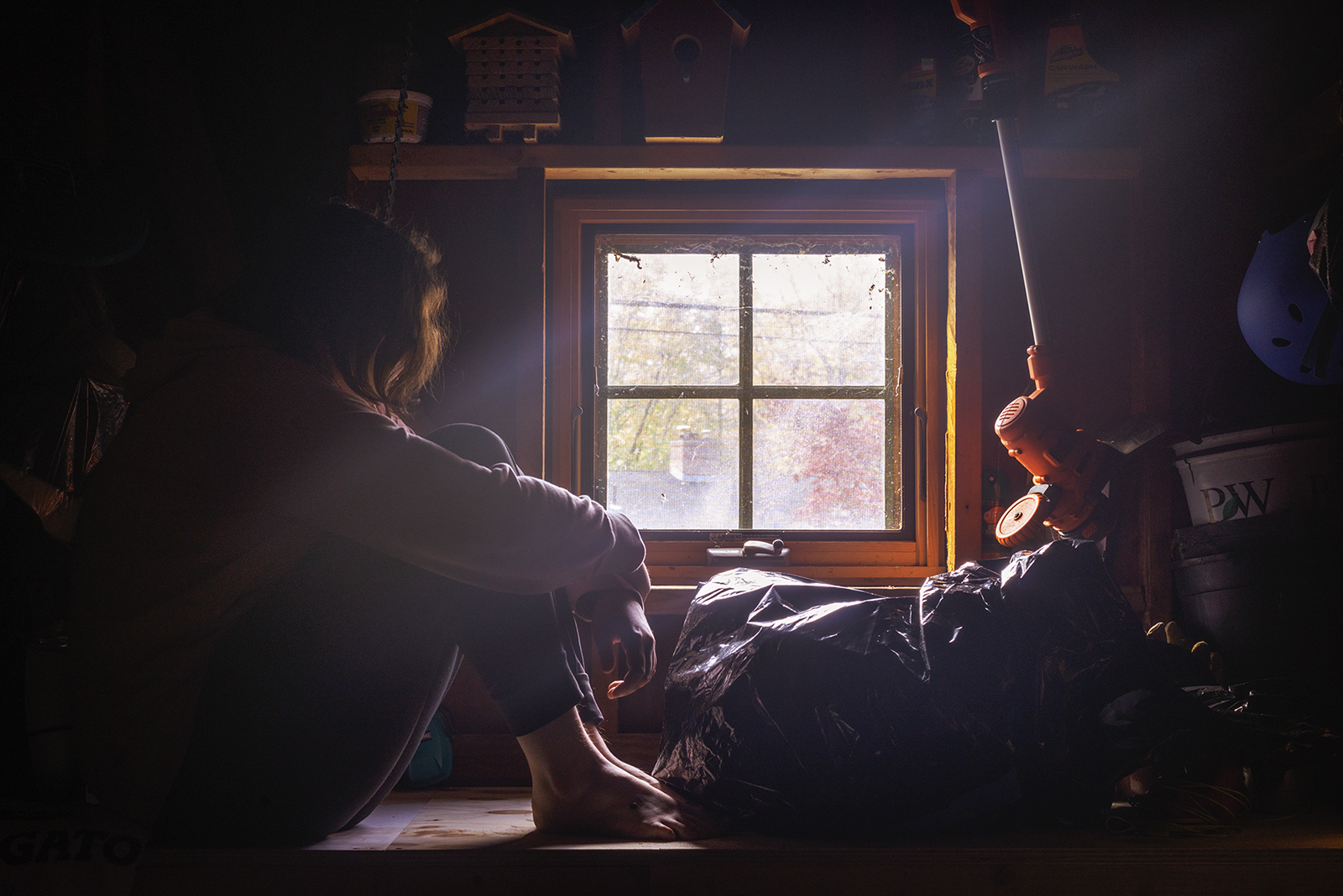
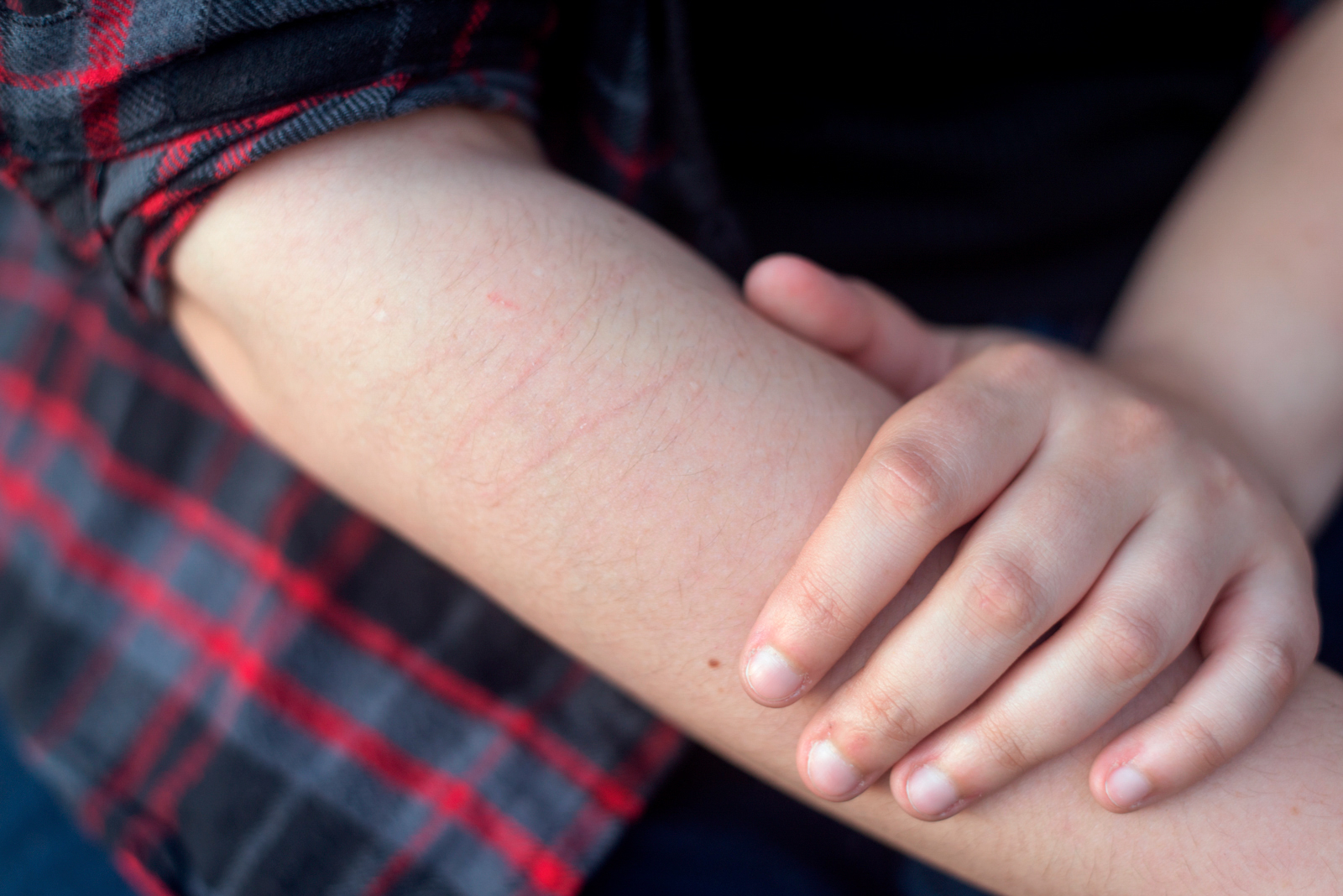
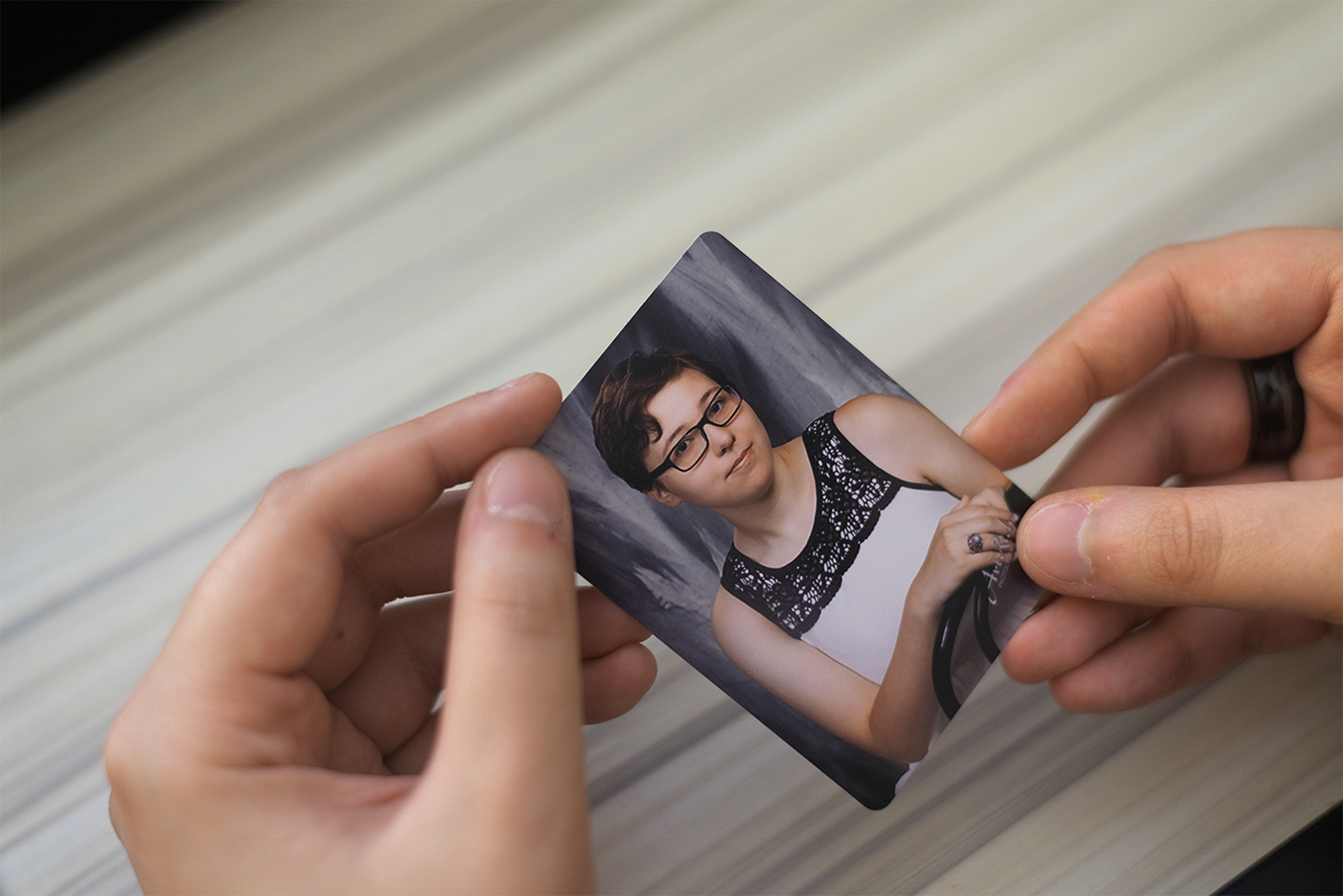

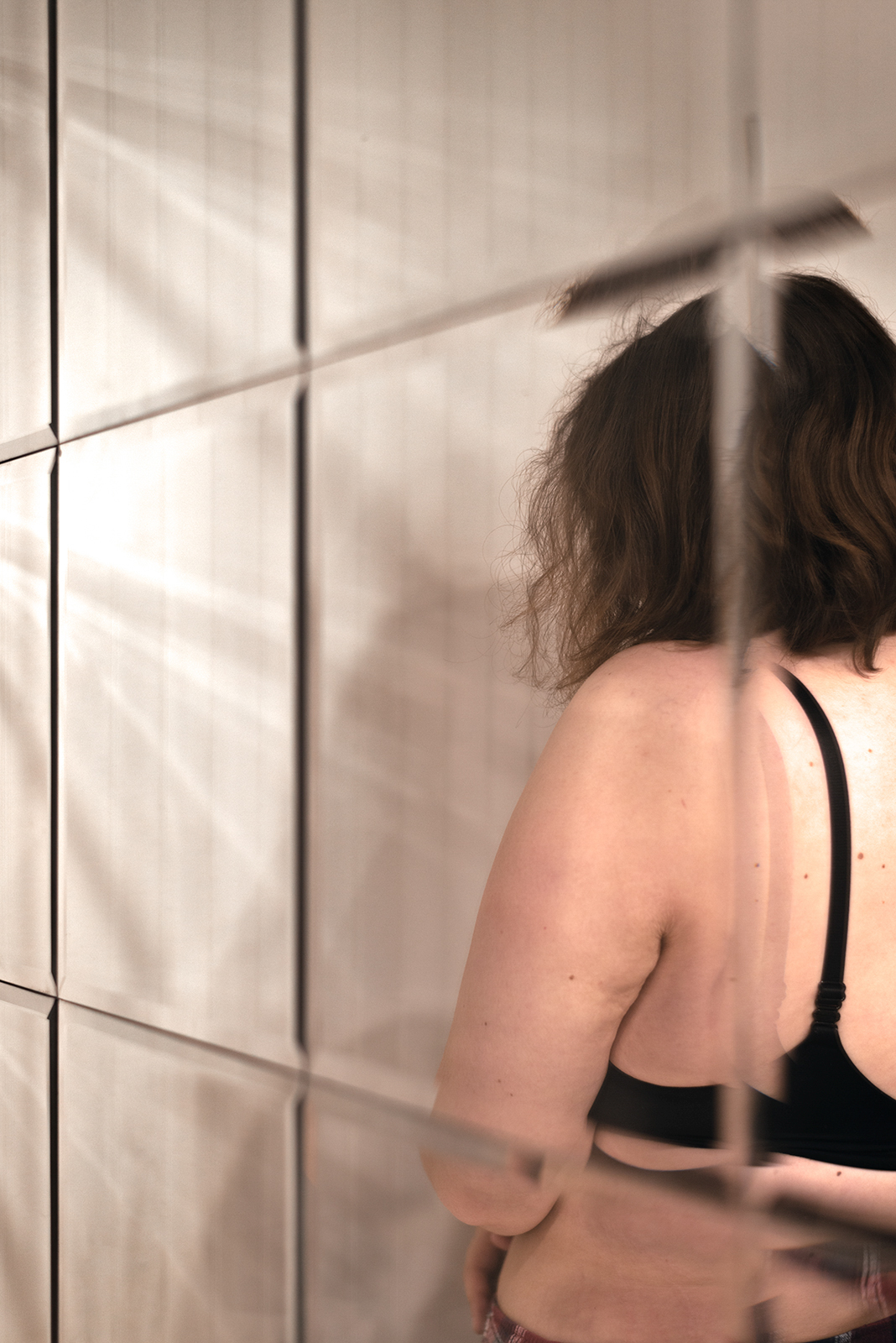

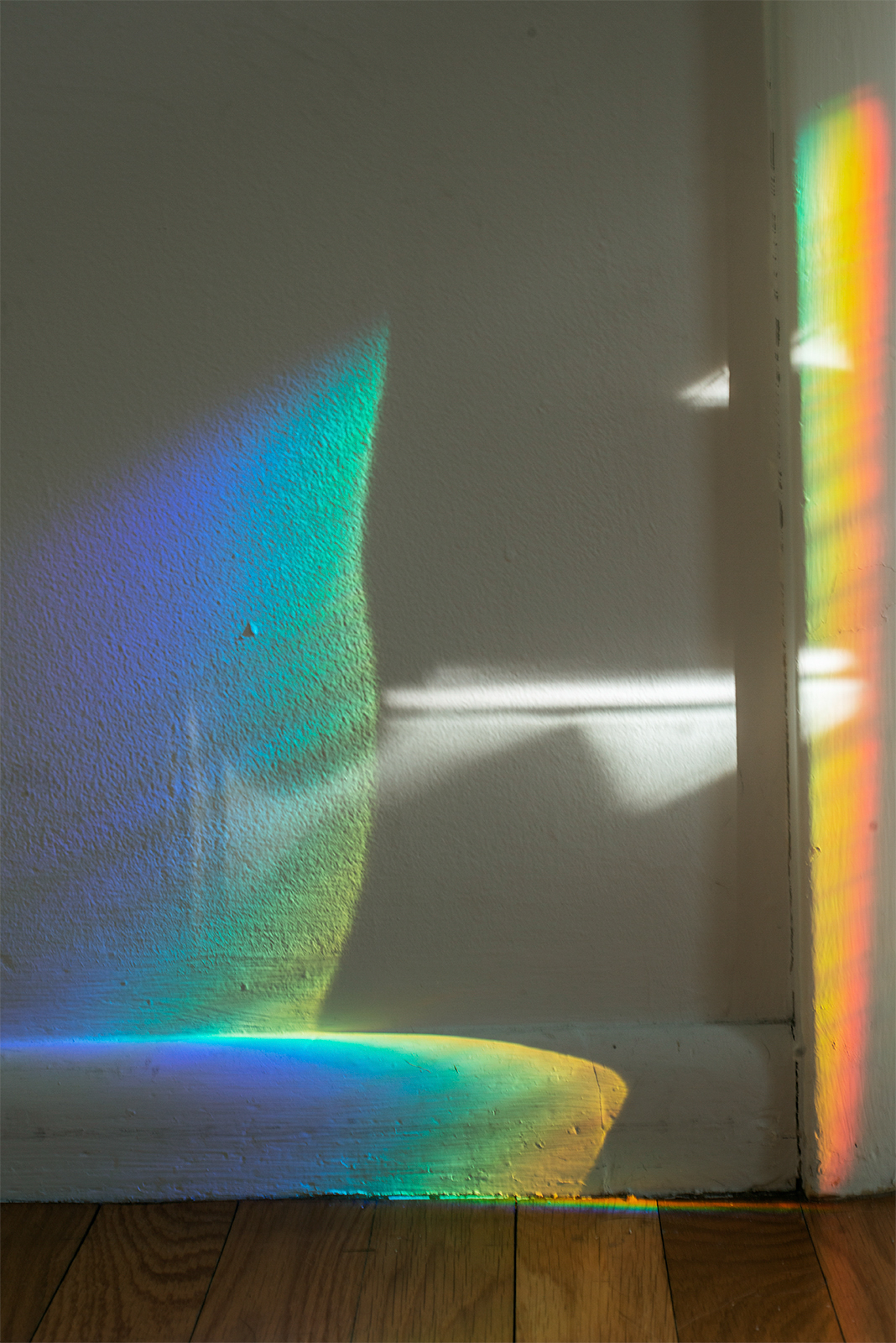
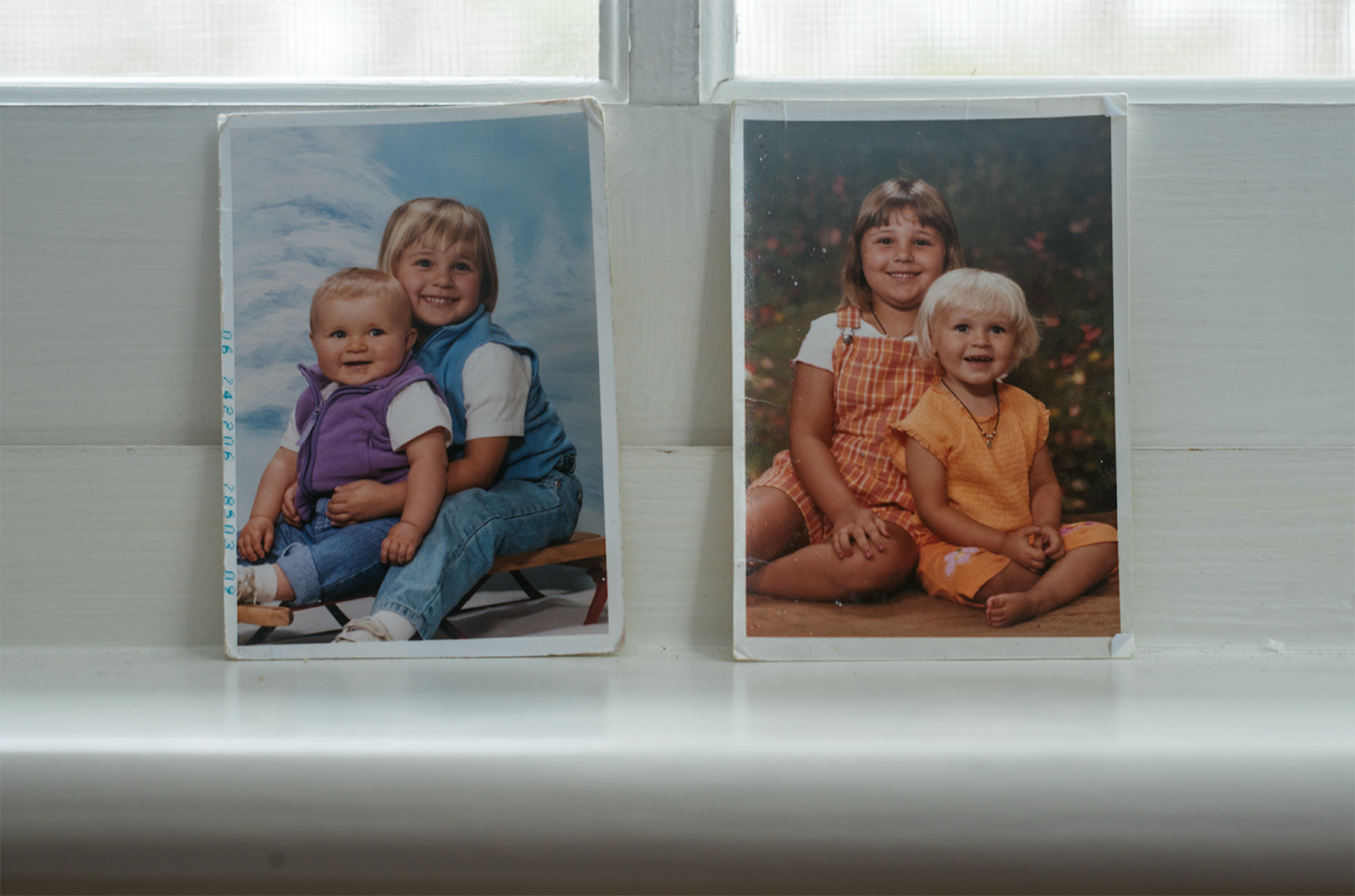
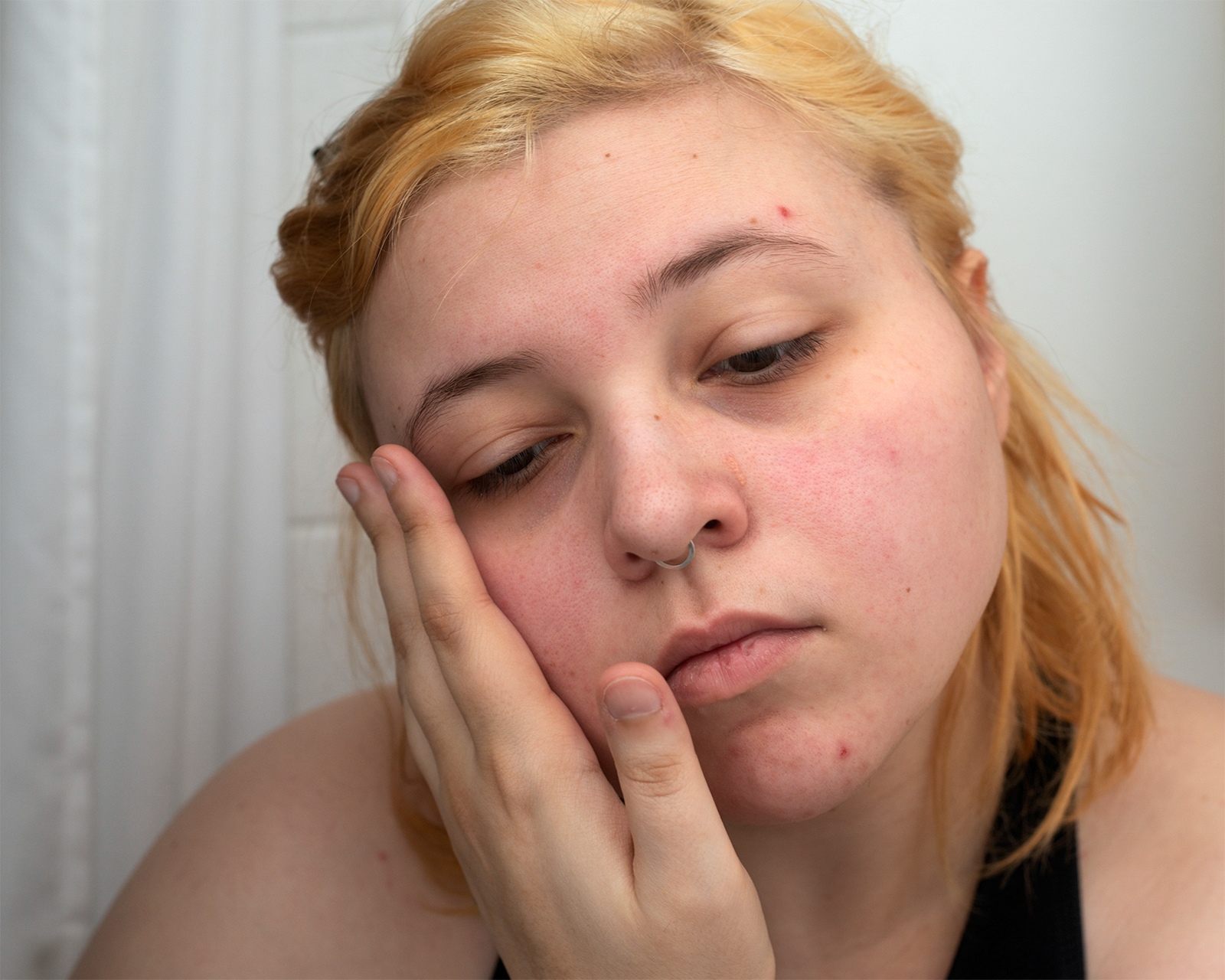

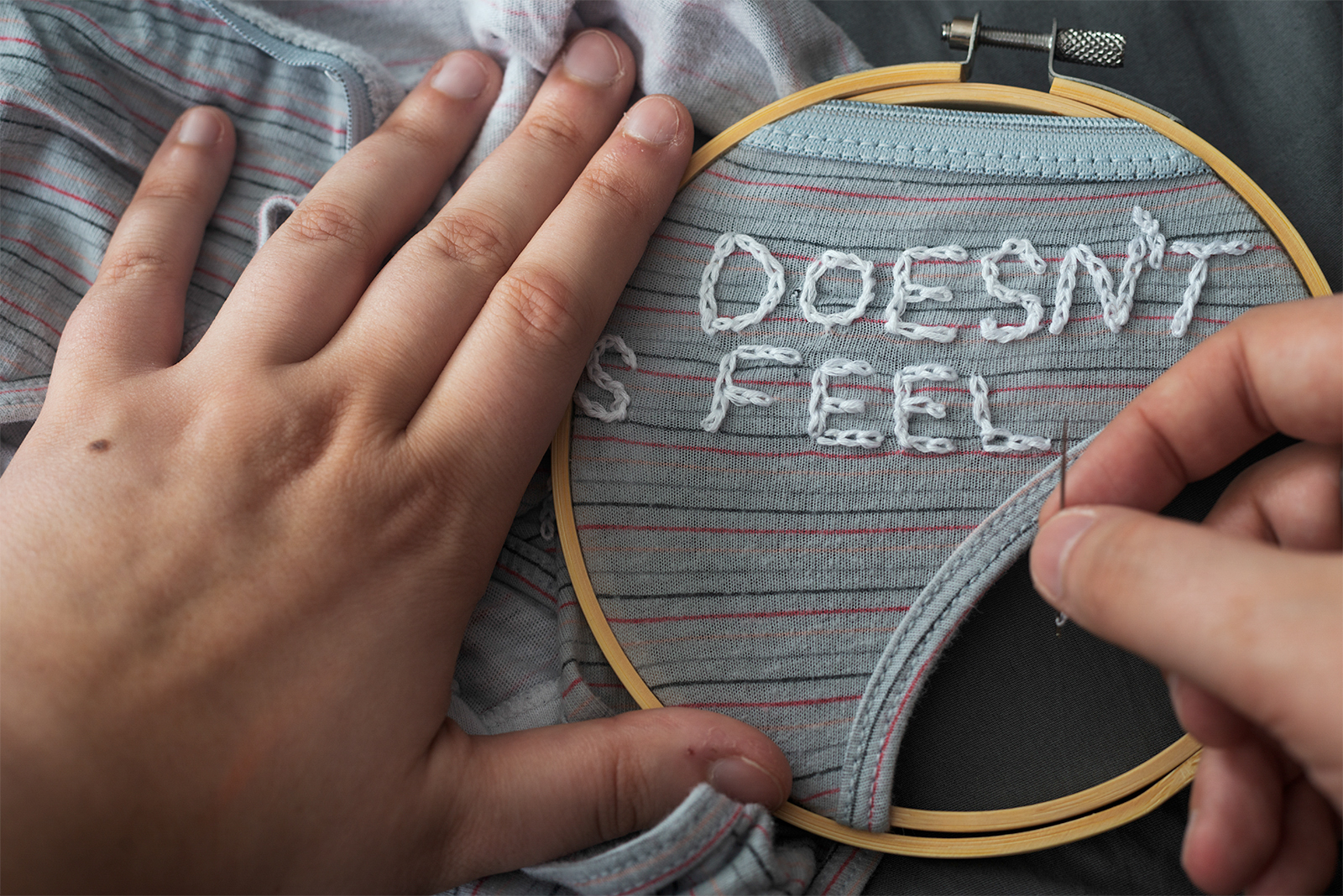
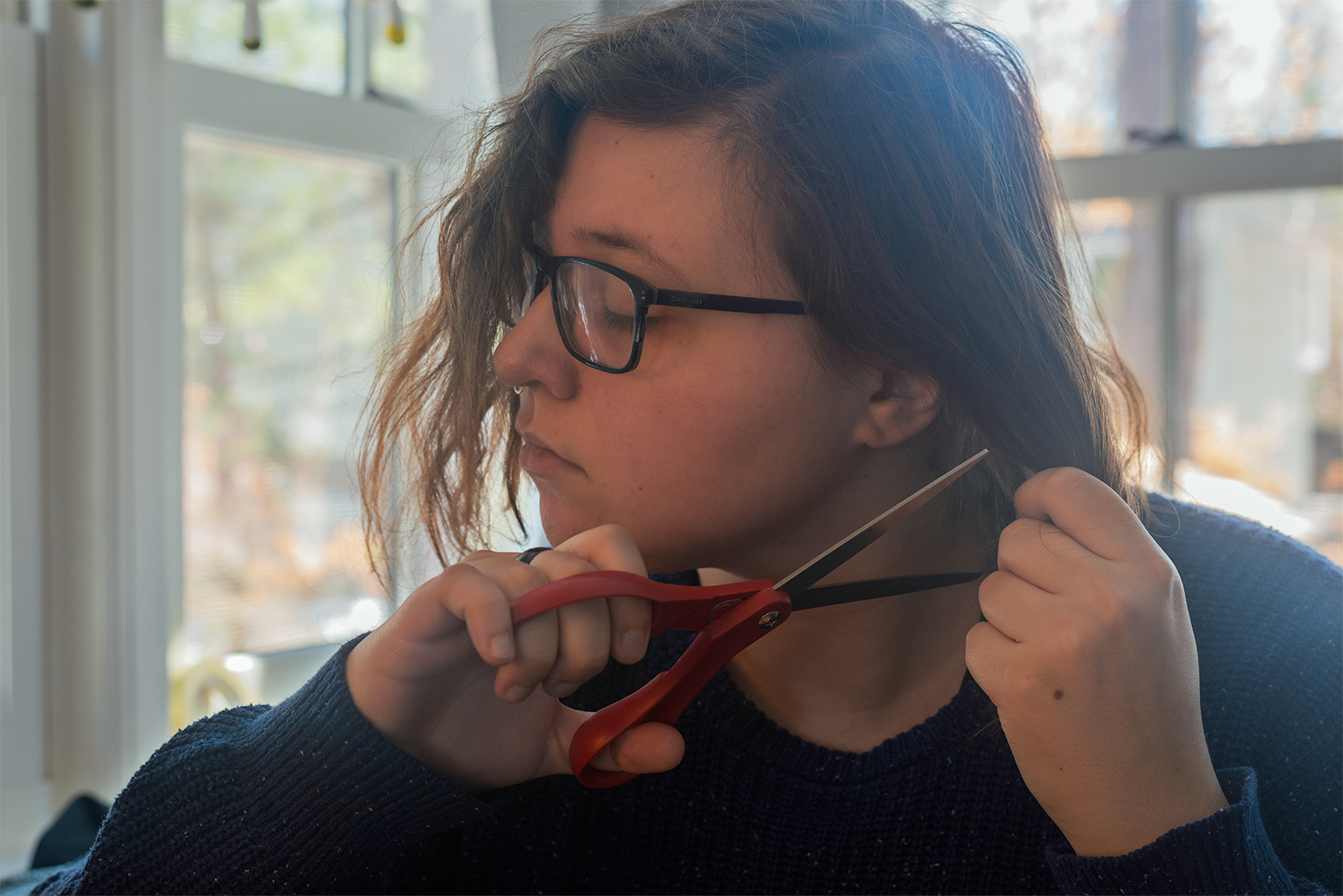

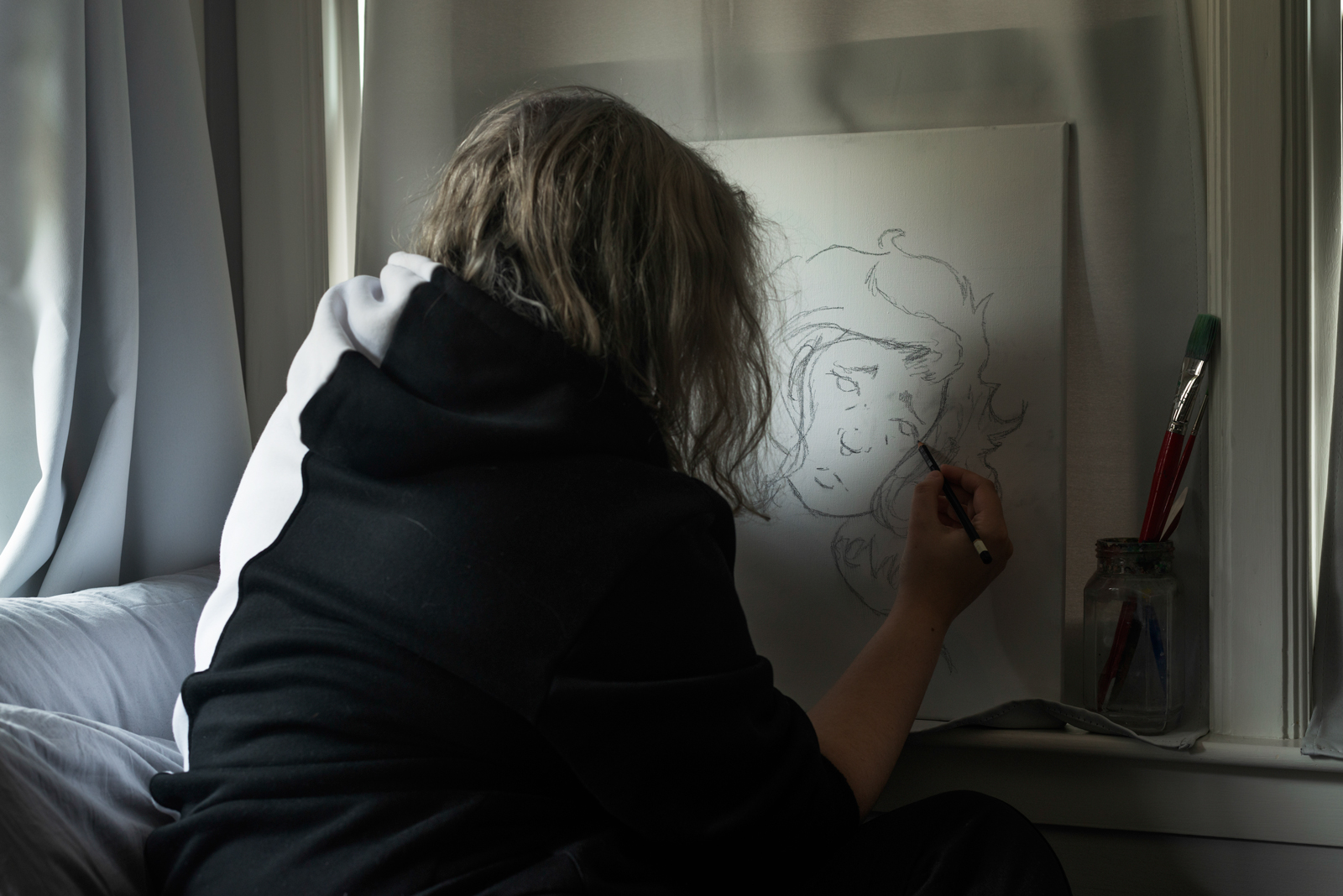
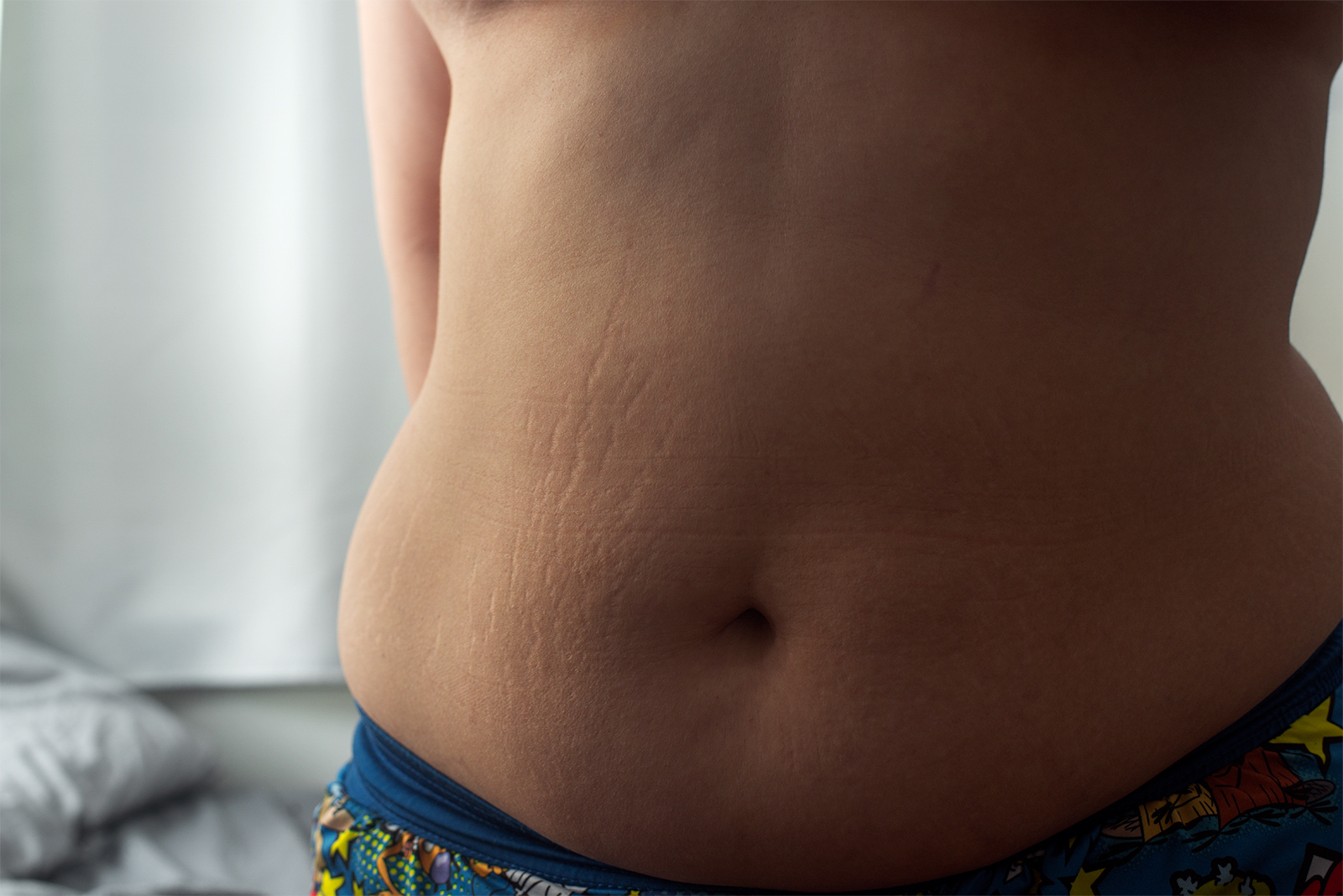
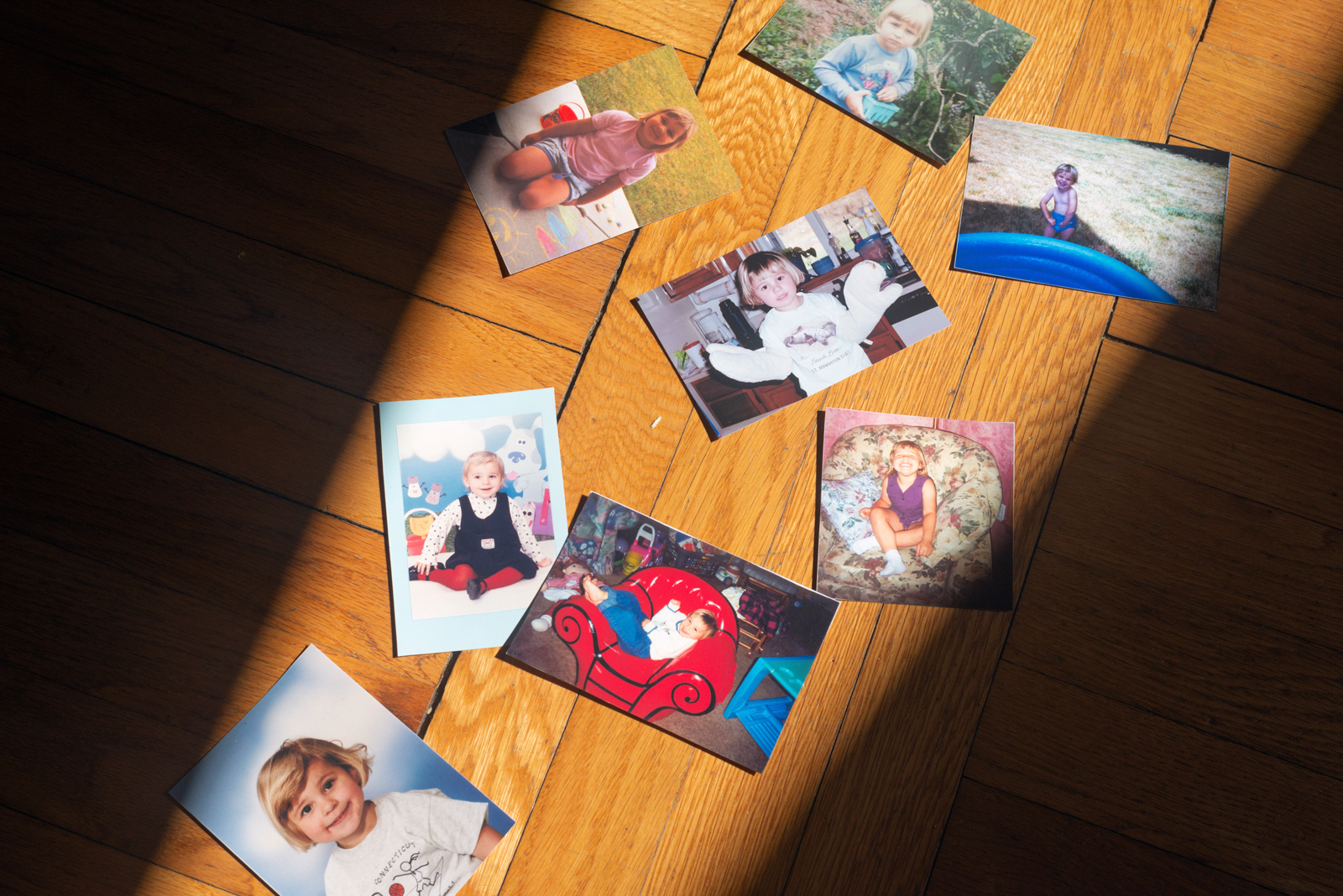


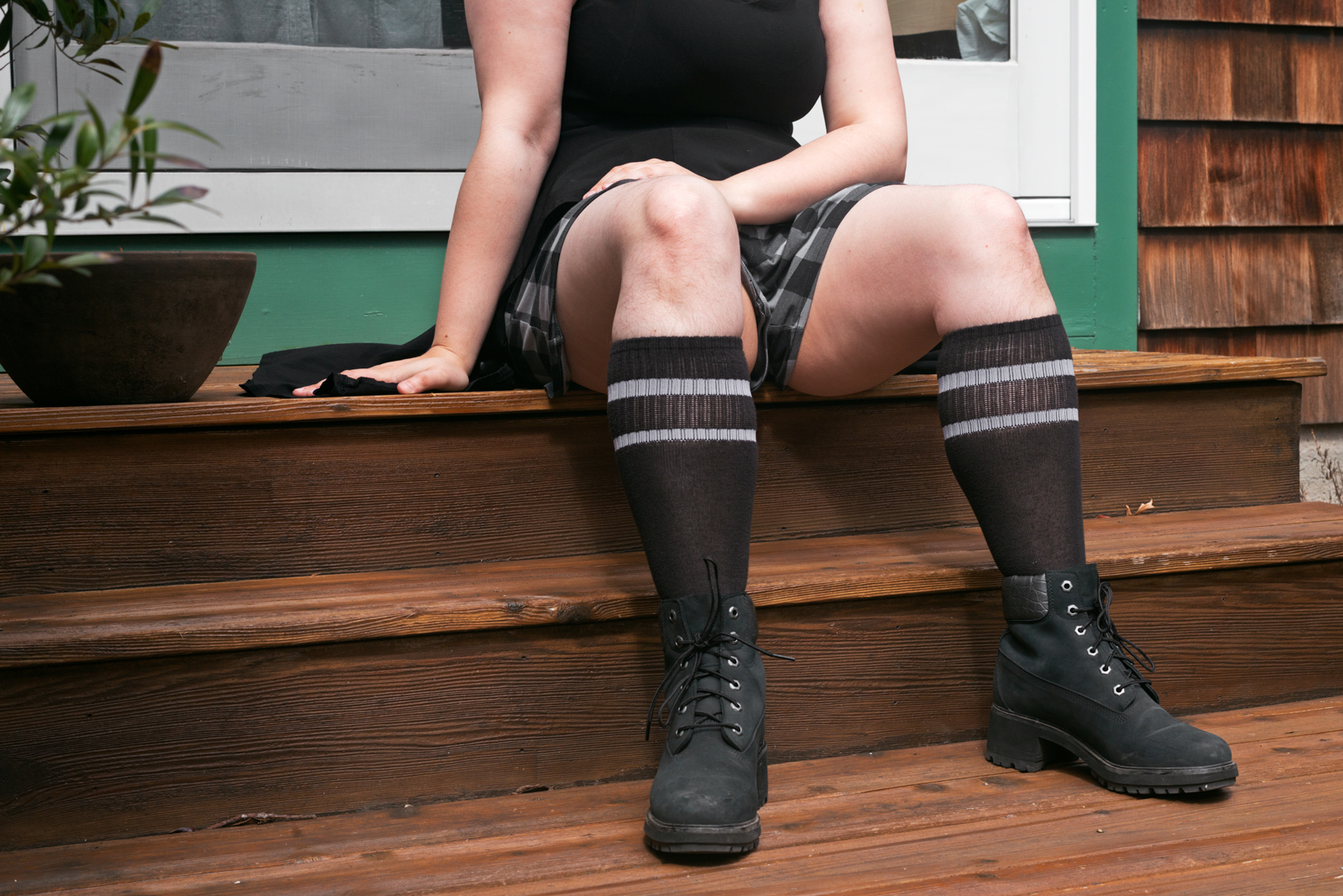



















biography
Ray Stephenson (they/them, b.1997), investigates and celebrates queerness and a sense of self; they document themself, the environment, emotions, family images, and create with diverse mediums. Inspired by artists such as Elle Pérez, Paul Sepuya, Patty Chang, Melissa Catanese, and musician Hozier—as well as their closest friends. They describe their thesis work as an expression of how they are working to transcend previous constructions of identity. They plan to continue this work after graduation, using their Bachelors in Photography (2021) and Associates in Visual Fine Arts (2018), to expand upon their thoughts of identity and the branches connected to it.
interview
Ray Stephenson in conversation with Ashton Lyle
AL: Who are you and where would you say you’re from?
RS: My name is Ray Stephenson. I grew up and am from southeastern Connecticut, graduating from Montville High School and with my Associates in Visual Fine Arts from Three Rivers Community College in the same county. I use They / Them pronouns and identify as queer and an artist.
AL: How did you come to photography?
RS: While attending community college, I knew I wanted to further my education and that meant choosing an art medium to study rather than learning and experimenting with the range of mediums that the community college provided; though I haven’t lost that interest in multiple mediums. In deciding on photography, two elements were great pulls in that direction. One of my best friends and I were really into a video game where photography is what the main character studies and plays a huge role in the story of the game. I picked up a camera because of this game and their encouragement. The second pull came when I started carrying my camera around campus. There was one photo based class I did not enjoy for the curriculum and the professor but my best friends fueled my passion for the art. The camera from that class documented many adventures with my friends in the final year of our collective time at the college; the photographs it took made us so happy and, at least for me, more consciously grateful of the amazing friends and great memories I made. Granted, we never lost touch, but having these memories and knowing what photography created them does encourage me to continue.
AL: That’s interesting that you talk about a history of working with multiple mediums and a personal connection to artists working outside photography. I’m wondering if you can talk a little about how these influence your practice?
RS: Sure, yeah! Art has always been a great mode of expression and I have never been one to practice just one medium; I may have a class or time where I focus heavily on one but I move around a lot. At my community college my friends and I were able to take classes in drawing, painting, graphic design, photography, 2D design, 3D design, creative writing, and ceramics. Once graduating and attending college at MassArt, I was mostly working with photography; we all picked one major and didn’t have much of a push or time to play with others like we once did. I have no disrespect to anyone who sticks to one or a couple mediums but I was initially educated in expression across a bunch of mediums and when it comes to expressing myself I know what works for me in any given practice and I need to pursue more than photography. I took three drawing courses at my community college plus an illustration course at this college and when the latter course moved online we focused a lot on daily self portraits. I relied on selfies I took on my phone to push my portraits and in turn I found myself wanting to turn this expression towards the camera and take self portraits that way for my major studio. Due to my reinvigorated interest in drawing, I find myself in a position where I want to translate some of these drawings into paintings to play with expressions I’m not sure how to represent with photography. It also helps that I am still best friends with a number of multimedia artists from my community college who inspire me to keep myself free and open to any and all forms of expression. I hope to not only continue illustrating outside of photography but to put that interest back into painting or wood burning or ceramics.
AL: Who influenced you?
RS: It’s not a big secret after what I just shared that my best friends from my community college are a huge part of my personal and artistic growth and experience. I am incredibly thankful for them and they inspire me so much. Their range of interests in and out of art has provided me with the drive to continue to explore the mediums I use to express myself and my ideas; as well as when to step back and enjoy the time away from work. They inspire me in so many ways every day and I can’t wait to see how their influence pushes me post graduation.
Within the larger scope of art, there are a handful of artists I never stop enjoying and looking to. Hozier, the musician, has helped influence how I write and express my emotions. Alessandra Sanguinetti, Elle Perez, Sally Mann, Paul Sepuya, Patty Chang, Melissa Catanese, and Sara Cwynar as photographers open my eyes to the range of visuals possible in front of the camera and the depth of content the medium can convey. Concept Artist John Sweeney and Instagram Illustrators Julian Miholics (@julianmiholics) and Grimes (@ggggrimes) help me understand I can express outside of photography my appreciation for landscape, environments and art of identity respectively. I take a lot of influence from the video games I play, shows and movies I watch, and books I read as well. I take in a lot.
AL: Your work often feels diaristic, in the sense that it is revealing rather than explanatory which gives it a unique authenticity. How do you think about the role lived experience in your work?
RS: Art is an excellent place for me to be expressive of myself without falling into my self-dug pitfalls of writing; writing and rereading negative emotions and events word for word is destructive for me. The visual language of something like photography limits the rambling I can dive into when writing or talking.
My oversharing feels less like an invasion of headspace, if that makes sense, when my visuals can speak for themselves and share more heartfelt and concisely than words can. While I haven’t given up writing, I’m letting it share it’s expression with my art and in collaboration they become something more. My art is finally becoming personal and self expressive in a way I don’t think it ever has before and I cannot help but have it be so personal and diaristic. I think having my work be this soft, for lack of a better word, is revealing in my own journey of self expression- this is what feels right and authentic to me and it’s what I am capable of in this moment. Perhaps it could even lend itself to being more digestible to those who want to take that step as well. I do have an interest in playing with more staged or constructed ideas in the future though, time will tell.
AL: I think you’re absolutely right, the translation of personal experience has such a big role in any form of communication. How do you think about translating your life into your work?
RS: While I do take my art and work seriously to some extent, I try not to plan or coordinate every measure of it. I do happen to keep a planner but I don’t fill in every day, working as I go to not overwhelm myself but staying aware of what’s due or happening next. I think that approach can be seen in my work. There are some instances where you can tell I dug through my closet or piles of paper to lay something out or that I am working out the notes I took from crit or lecture visually to play out notes I want seen in my art. However, there are moments that just sort of happen and there is some magic in that and I think that is what life is in my work, the stuff that happens regardless of planning and is genuine. I take time to think about what image to use from 30 images of the same thing but that thing could be me having a crisis about the length of my hair or shape of my body; while these things do last they weren’t necessarily planned. The notion came in that moment and I was able to act on it. Sticking to a plan has satisfaction in it but if I’m enjoying myself and finding great moments from breaking away from the plan that’s satisfying too.
AL: I remember that so much of your early work was interested in the natural world and a desire to explore, how have these impulses shaped your current project?
RS: The natural world will always be important to me regardless of the form it takes in any given project, series, or what have you. When it came to the self expression that became so important to this project, the natural world took a step back as I looked more internally -- physically and literally. When photographing landscapes or nature during this project, I find myself easing back and reverting to simple observational shots of birds, trees, and the landscape. This project, in whatever stage it is in now, doesn’t need that. It needs reflection of a scale more attune to the intimate. There will always be elements of nature in my work but with this specifically I don’t think of it as the main attraction, rather more of a guest star. Nature’s lack of great presence in this work has pushed me to focus more on me and that’s what this project needs. Hope to revisit this great interest of mine in some form when things get better in the world.
AL: Focusing on yourself in difficult times through work can be a really revelatory process. Have you made any discoveries about yourself through this project?
RS: I like to think I definitely have. Even if it hasn’t been seen through my images or talked about in class. I have been writing, reading, and thinking about the subject matter I have attached to this project and it has allowed me to become closer to myself and understand where I came from. I discovered words that help me feel more valid in my gender and mental health though I still struggle with both quite a bit; I have learned broader strokes of definitions that help me expand upon my current understanding of self; I have reflected on the narrow passages of understanding I grew up with and how they have widened over time; I have realized that having words to put to my experience can be liberating especially when I can put them there. There is still plenty of work for me to do regardless of the medium. Learning more and sharing more between my friends has been so helpful even if I haven’t found a way to share it to a wider audience; I’m not sure everyone needs to know everything.
AL: What are some of the challenges you’ve overcome in creating your work?
RS: A big challenge for me this semester, or even this year, has been the acknowledgement and learning of self. I always figured my thesis would be personal, but with the restrictions of the pandemic, I didn’t expect it to become this personal. This turnaround has been both anxiety ridden and liberating. The remote work has freed me from the stress of commuting and printing but it has made me really dive into who I am through queer identity and my relationships with myself, others, and mediums of expression. The books I have read challenged my understanding of mental health and my relationship to the illnesses or disorders I experience. They have also expanded my understanding of queerness, freeing me from more confines of labels and helping me understand the motions of euphoria, but also dysphoria. Given how personal I have been with my work and myself I have learned a lot and that comes with its challenges inside and outside. These personal routes have been the most challenging and rewarding.
AL: Your project includes a number of these amazing “pictures of pictures” for lack of a better phrase, photos where the subjects are often playing a role for the camera. How do you think about notions of expectation and performance in this work?
RS: I’m so glad you think so, thank you. I am so grateful that images of past me have been able to share the stage with present me. With how personal and reflective this work has been, I couldn’t imagine not acknowledging who I used to be; even if it was just for the killer fashion I will never again achieve. The role time plays in my work is important regardless of the length it spans. Having these family archive images I think adds more credibility to the range in which queerness can exist and evolve, there is no right or wrong way to be or a specific timeline to keep to or experiences to have. Everything is so individualized and even with shared experiences, nothing is exactly the same. We could have all had pictures at sears when we were younger but the acknowledgement of time is what makes the timeline so much more unique. I’m not sure if that makes sense.
However, I think there will always be a conversation between different versions of me through time and medium in my art.
AL: Do you have a favorite image from this work? What’s the story behind it?
RS: I’m not sure I can say definitely if I have a favorite image from this work but a few do speak to me and my person more than others.
One is the image of my stomach, where you can see my stretch marks and the slight crease on my skin of where my waistband was. Growing up and now I struggle a lot with my size and how comfortable I feel in my body, the relationship I have with this. Thinking about queer culture and weight, we do come in all shapes and sizes but there is a push like everywhere else to be more slim. I’ve never been particularly skinny, nearly always falling into a category of overweight. This has hurt me and my relationship with queerness especially as of late. I have always been one to wait out the hunger to skip meals though unhealthy then munch a little too much later. Now, with interest in top surgery of some sort like reduction, all kinds of thoughts rake at my brain regarding weight.. This I think is some way of letting me see myself, much like my other image of my hair cutting contemplation. My discomfort comes in waves and sometimes they take a while to recede, if at all. I’ve been bleaching and coloring my hair to fight cutting it short; liking long hair on men but not feeling like I look masculine enough. Then binding my chest to flatten and become more transcendent. It’s not permanent but an irritating and sometimes painful solution despite the joy it can bring. I think these images are nods to the struggle I feel to look how I want but that it’s a complicated process ;I struggle with how to cope on the outside knowing the reality of what can and cannot be changed and what that means. These thoughts see themselves being mentioned in my embroidery photo as I stitch onto a pair of women’s underwear, only part of the thought revealed outward. My images hold conversations with one another, I see while talking about them, and though my oversharing can be a lot for me, these connections do bring me some joy.
AL: Where do you see your work going next?
RS: I feel that while this project could maybe find an end through some range of discoveries of self, I’m not sure when this particular exploration could end, if ever. During walkthroughs with a guest photographer, I was told that our relationships with ourselves are super complicated and don’t necessarily fit in one year or semester. In acknowledging this, I am reminded of how supportive my circle of people are to me, how much they love me regardless of name, gender, size, mental health, or what have you. I’m so incredibly thankful knowing that I am loved even when I feel absent of it, it will always be there for me.
My journey is far from over and I think so is this project, regardless of the medium or form it takes. Maybe it will be broken up into stages and/or put into an ever growing book to be printed when the time feels right.
Until then, I want to engage with my friends and community again to create. Find projects I can spur and document as well as participate in. I may not be interested in holding my own gallery space somewhere super big or publishing through a major book company but I will continue to pursue what makes me happy, whatever that may be.
I want to create in all forms. I have no big plans and that feels okay. However, when that next idea comes - queer community project, exploration of my friendships, maybe something supernatural to push the creativity, combining my interests / mediums - I fully intend to lean into it and hope I can share it with those who are just as excited as I am.